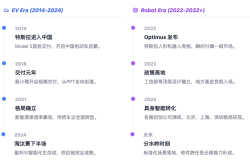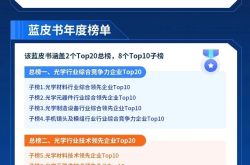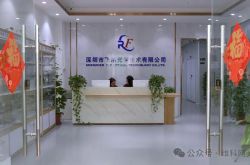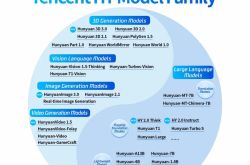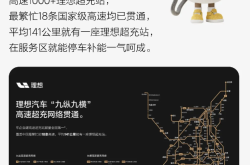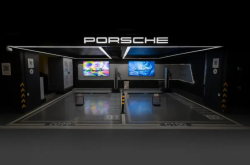MIIT Sets Tone for 2025 Automotive Standards: Emphasizing Intelligent Connectivity and New Energy
![]() 05/06 2025
05/06 2025
![]() 691
691
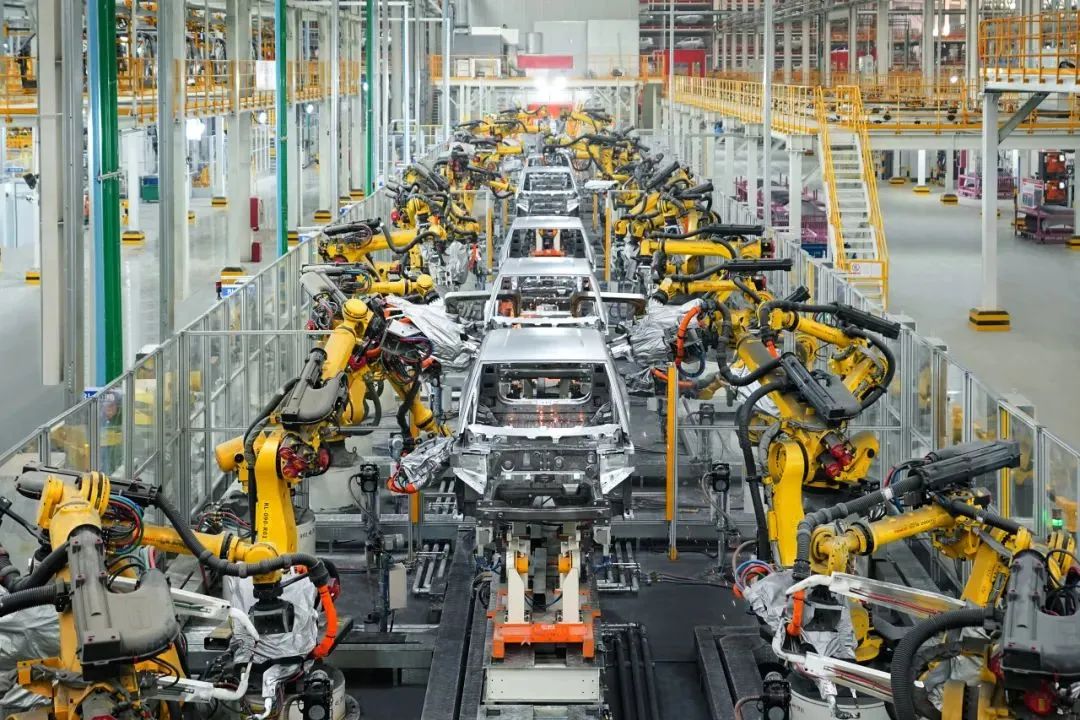
On April 28, the Ministry of Industry and Information Technology (MIIT) unveiled the focal points of automotive standardization work for 2025. Among the priorities, the plan emphasizes enhancing the safety standards of new energy vehicles. It promotes the issuance of standards for electric vehicle remote services and management, enforces safety requirements for power batteries, accelerates the review and approval of electric vehicle safety standards, and continuously elevates electric vehicle safety. Furthermore, it encourages the release and implementation of safety standards for commercial vehicle battery swapping, speeds up the formulation of charging performance, chassis battery swapping, and battery swapping compatibility testing standards, and conducts pre-research on megawatt-level charging standards for commercial vehicles to enhance the convenience of electric vehicle usage. The full policy text is as follows:
The 2025 automotive standardization work plan is formulated to comprehensively implement the spirit of the 20th National Congress of the Communist Party of China and the Second and Third Plenary Sessions of the 20th Central Committee, conscientiously execute the deployment requirements of the National New Industrialization Promotion Conference, and adhere to the guidelines of the "National Standardization Development Outline" and "Key Points for Industrial and Information Technology Standardization Work in 2025." The plan aims to further improve the standard system, enhance standard quality and effectiveness, strengthen implementation and application, leverage the leading and supporting role of standards, and support the transformation, upgrading, and high-quality development of the automotive industry.
I. Focus on the Overall Situation and Build the "Four Beams and Eight Pillars" of the Standard System
(1) Strengthen the Top-Level Design of the Automotive Standard System: Review the implementation of the "14th Five-Year Plan" technical standard system in the automotive industry and systematically assess its effectiveness. Initiate the compilation of the "15th Five-Year Plan" technical standard system for the automotive industry and promote the construction of a standard system that covers the entire industrial chain, process, and lifecycle.
(2) Optimize and Improve the Construction of Key Standard Systems: Continue to strengthen the overall planning of compulsory national standards for automobiles and enhance the timely formulation and implementation of these standards. Improve and implement the standard system in key areas such as intelligent connected vehicles and automotive chips, continuously optimize the new energy vehicle standard system, accelerate the implementation of the automotive dual-carbon standard system, and promote the iterative updating of standard systems for general automotive vehicles and system components.
(3) Prospectively Plan Standard Research in Cutting-Edge Areas: Analyze and evaluate the development trends and potential application scenarios of cutting-edge technologies, identify and determine the future direction of automotive standardization, promote the formulation and release of standard subsystems such as automotive artificial intelligence, solid-state batteries, and electric vehicle battery swapping, initiate the construction of new field standard systems such as data governance and application, and conduct advanced research on the standardization needs of new formats like flying cars.
(4) Accelerate the Promotion of the Internationalization Strategy of Standards: Research and determine the work direction and implementation path for the internationalization of automotive standards, steadily advance key initiatives such as the cultivation of international standardization projects and the overseas application of Chinese automotive standards, create an open and innovative global cooperation ecosystem, cultivate a diverse international standardization talent pool proficient in standards, foreign languages, and rules, and continuously enhance the contribution and influence of international standards.
II. Keep Up with the Forefront and Draw the "Standard Blueprint" for Emerging Fields
(5) Improve the Safety Level of New Energy Vehicles: Promote the issuance of standards for electric vehicle remote services and management, enforce safety requirements for power batteries, accelerate the review and approval of electric vehicle safety standards, conduct pre-research on compulsory national standards for fuel cell electric vehicle safety requirements and power battery recycling and utilization, and continuously enhance electric vehicle safety. Promote the review and approval of standards for power battery durability and thermal management systems, accelerate the research and development of standards for all-solid-state batteries, in-service testing of power batteries, and power battery identification labels, and continuously optimize power battery performance requirements. Accelerate the formulation of standards for drive motor system efficiency test methods, conduct pre-research on standards for distributed drive motor systems, hybrid systems, and on-board hydrogen systems, and strengthen quality requirements for key system components. Promote the release and implementation of safety standards for commercial vehicle battery swapping, accelerate the formulation of charging performance, chassis battery swapping, and battery swapping compatibility testing standards, conduct pre-research on megawatt-level charging standards for commercial vehicles, and enhance the convenience of electric vehicle usage.
(6) Strengthen the Supply of Standards for Intelligent Connected Vehicles: Promote the approval, issuance, and implementation of standards for autonomous driving design and operating conditions, automatic parking, and autonomous driving simulation testing, accelerate the research and development of compulsory national standards for autonomous driving system safety requirements, and establish a safety baseline for autonomous driving systems. Accelerate the formulation and revision of compulsory national standards for combined driving assistance systems and automatic emergency braking systems, revise lane-keeping assistance system standards, promote the research and development of standards such as reverse assistance, and improve the safety level of driving assistance products. Accelerate the promotion and implementation of standards for LTE-V2X direct communication on-board information interaction systems, promote the formulation of standards for platoon following, digital keys, and network information assistance, and accelerate the application of networked functions. Promote the release and implementation of standards such as information security engineering, accelerate the formulation of compulsory national standards for automotive cryptography, complete the review of data security management systems and automotive security vulnerability classification and grading standards, accelerate the research and development of important data identification standards, and improve network security and data security assurance capabilities. Promote the research and development of standards for intelligent cockpit function evaluation, interaction safety, and bioretention monitoring, improve the standard system for intelligent cockpits and human-computer interaction, conduct pre-research on automotive artificial intelligence standards, and lead the integrated application of new technologies.
(7) Accelerate the Formulation and Revision of Automotive Chip Standards: Accelerate the formulation of standards for automotive chip environment and reliability, information security, and consistency inspection, and improve basic evaluation methods for automotive chips. Promote the release and implementation of standards for electric vehicle security chips and power drive chips, complete the review and approval of standards for smart cockpit computing chips, satellite positioning chips, infrared thermal imaging chips, and chassis control chips, and accelerate the research and development of product standards for control chips, sensor chips, communication chips, and memory chips to meet the application needs of automotive chip selection and matching.
(8) Promote Research on Automotive Electronics Standards: Continuously improve the automotive electromagnetic compatibility standard system, promote the review and approval of compulsory national standards for road vehicle electromagnetic compatibility, publicly solicit opinions on standards such as electrostatic discharge, and promote the research and development of electromagnetic compatibility standards for vehicle antennas, OTA, and electromagnetic environment adaptability. Accelerate the research and development of standards for autonomous driving system functional safety, expected functional safety, and battery management system functional safety to enhance the level of functional safety and expected functional safety of key systems. Conduct pre-research on reliability standards for accelerated testing of electronic equipment, promote the revision of IP levels and environmental evaluation standards, and improve the quality of electrical and electronic equipment. Promote the review and approval of standards such as vehicle-mounted MEMS LiDAR and front field of view assistance, publicly solicit opinions on standards such as vehicle-mounted display terminals, accelerate the research and development of standards for vehicle-mounted wireless broadcast reception systems and vehicle-mounted inertial navigation, and standardize the performance of vehicle-mounted electronic component products.
(9) Strengthen the Research and Development of Green and Low-Carbon Automotive Standards: Promote the release and implementation of standards such as evaluation methods and indicators for passenger car fuel consumption and energy consumption limits for electric vehicles, accelerate the research and development of standards such as passenger car on-board energy consumption monitoring, pure electric utilization coefficient of light hybrid vehicles, and evaluation of vehicle predictive cruise control systems, and conduct pre-research on standards such as heavy commercial vehicle average fuel consumption evaluation, hydrogen (ammonia) engine vehicle technical specifications, and automotive energy conservation classification and grading, to continuously promote energy conservation and emission reduction in the automotive industry. Promote the release and implementation of standards such as road vehicle greenhouse gas management terms and definitions, product carbon footprint labels, and carbon footprints of key road vehicle and passenger car-related products, promote the review and approval of standards for engine manufacturing enterprise carbon emission accounting and scrap motor vehicle recycling and dismantling enterprise carbon emission accounting, accelerate the research and development of standards for vehicle manufacturing enterprise carbon emission accounting and carbon footprints of key products such as electric vehicles, power batteries, and drive motors, and conduct pre-research on carbon emission reduction technology standards such as automotive product electronic identification, recycled material use, and scrap automobile resource comprehensive utilization, to provide support for automotive carbon emission management.
III. Support Transformation and Inject "Upgrading Momentum" into Traditional Industries
(10) Strengthen the Support of Automotive Safety Standards: Promote the release and implementation of compulsory national standards for hazardous goods transport vehicles, accelerate the research and development of compulsory national standards such as passenger car structure safety requirements and special school bus safety technical conditions, promote the revision of standards such as control indicators and vehicle visibility, and enhance general safety field standards. Promote the release and implementation of compulsory national standards such as side impact and rear impact, accelerate the research and development of standards such as steering mechanism injury prevention and front visibility, promote pre-research on the revision of standards such as automotive seats, side and rear lower protection, and improve the technical level of products in passive safety fields including occupant protection, vehicle protection, and road user protection. Accelerate the formulation and revision of the series of standards for passenger car brake-by-wire and steer-by-wire, promote the research and development of standards such as electronic stability control systems and brake assistance systems, initiate the revision of braking standards for commercial vehicles and trailers, and promote technological upgrades in the field of active safety.
(11) Consolidate the Basic Support of Automotive General Standards: Accelerate the revision of compulsory national standards for the overall dimensions, axle load, and mass limits of automobiles, trailers, and automobile trains, promote pre-research on the formulation and revision of standards such as main and trailer matching and electric trailers, and solidify the foundation for industrial development. Conduct research on the formulation and revision of standards for test methods, reliability, NVH (noise, vibration, and harshness), ergonomics, etc., and continuously promote the improvement of automotive quality. Promote research on key standards in basic fields such as basic components, basic elements, corrosion and aging resistance, and lightweighting.
(12) Conduct In-Depth Research on User Experience Standardization: Investigate new product technologies and standards such as hidden door handles, active pretension seat belts, large-angle seats, and in-car warning sounds, conduct pre-research on standards, and strengthen the feasibility demonstration of standard project initiation. Research standards for intelligent light projection to enhance the technical level of vehicle lighting and vehicle-to-other-road-user interaction.
IV. Align Internally and Externally and Expand the "Cooperation Space" for International Standards
(13) Steadily enhance the institutional openness of standards. Continuously monitor and research international standards, improving the alignment between national automotive standards and key international technical indicators, aiming for an international standard conversion rate exceeding 85% in the automotive sector. Vigorously promote the translation of national automotive standards into foreign languages, with a principle of "translating as many mandatory national standards as possible," and expedite the release of foreign language versions of new energy vehicle standards to facilitate the "globalization" of advantageous industries. Encourage the submission of corresponding international standard proposals concurrently with the formulation and revision of national standards.
(14) Deepen the coordination of automotive technical regulations. Comprehensively track the developments and trends of the United Nations World Forum for Harmonization of Vehicle Regulations (WP.29), diligently fulfill obligations as a Contracting Party to the 1998 Agreement, and carry out duties as Vice Chair of the Working Party on Automated/Autonomous and Connected Vehicles (GRVA), the Informal Working Group on Automated Driving Systems (ADS IWG), and the Informal Working Group on Electric Vehicles and the Environment (EVE IWG). Take the lead in formulating key regulations such as those for automated driving systems and on-board battery durability, while continuously enhancing participation and contributions to international regulatory coordination.
(15) Actively participate in the formulation of international technical standards. Effectively fulfill duties as the convener of international standard working groups focused on autonomous driving test scenarios, automotive perception sensors, and electric vehicle battery swapping. Accelerate research and development on international standards for on-board radar, fuel cell systems, and electric vehicle battery swapping. Focus on promoting the establishment of international standards for electric vehicle dynamics, passenger car external protection, and electromagnetic compatibility, thereby continuously elevating the international status and influence of Chinese standards.
(16) Strengthen and expand global partnerships. Intensify exchanges and cooperation with ASEAN national standards and regulations, promoting the implementation of the "China-ASEAN Partnership on Advanced Automotive Standards and Regulations" through "point-to-area" initiatives. Actively expand and deepen exchanges and cooperation with relevant countries in Europe, Central Asia, Africa, South America, and other regions in the field of automotive standards and regulations. Further leverage the pivot and radiation role of the China International Automotive Standardization Center (Geneva) to broaden exchanges and cooperation with relevant international organizations.
V. Uphold integrity and innovation, enhancing the "governance effectiveness" of automotive standards
(17) Actively align with national strategic needs. Implement the deployment of documents such as the "Work Plan for Supporting High-Quality Economic Development through Standard Upgrades" and the "Action Plan for Promoting Equipment Updates and Consumer Trade-Ins through Standard Enhancements," efficiently completing related standard research and development tasks while simultaneously strengthening standard promotion, publicity, and implementation. Establish an active alignment mechanism with national major strategies and industrial policies, promoting the simultaneous deployment and implementation of standards alongside strategies, plans, and policies, and enhancing the efficient connection between standards and the access management of automotive enterprises and products.
(18) Strengthen the interaction between standards and technological innovation. Implement the requirements of the new industry standardization pilot project, conducting pre-research on standard forward-looking layout, strengthening the summarization of phased achievements, and accelerating the research and development of standards for new technologies, functions, and products. Focus on emerging fields, targeting key links, application scenarios, core technologies, and products in the automotive industry chain. Simultaneously accelerate the formulation and revision of key standards, or pilot a standard-first model, advancing the research and development of advanced and applicable standards in accordance with the principles of "product generations, technology classification, and research and development phases."
(19) Promote the upgrading and renewal of organizational construction. Initiate the rotation of the National Technical Committee on Automotive Standardization, optimizing the composition of committee members by actively including enterprises, industry organizations, and technical institutions with strong innovation capabilities and rich standardization experience, thereby improving the extensiveness and representativeness of committee members. Continue to strengthen organizational construction, enhancing the classified management and service of committee members, optimizing and improving the special seminar mechanism of the National Technical Committee on Automotive Standardization, and fully mobilizing the enthusiasm of committee members and member units.
(20) Improve the quality and effectiveness of automotive standard management. Enhance the pre-evaluation mechanism for standard project initiation, closely monitoring key links such as standard project initiation, solicitation of opinions, technical review, and standard approval, further clarifying responsibilities, and improving the quality of standard demonstration and preparation. Establish a full-process green channel for important and urgently needed standards, further shortening the standard approval and submission cycle, and improving overall formulation efficiency. Solidly implement the evaluation of standard implementation effects, appropriately shortening the review cycle based on the speed of industry development, the frequency of technology iteration, and policy changes, thereby promoting the iteration and updating of standards. Explore and promote "AI + automotive standardization," leveraging large AI models to empower automotive standardization construction.
(21) Strengthen the promotion and publicity of automotive standards. Comprehensively utilize new media communication forms such as one-picture reading and standard cloud classes to strengthen standard promotion from multiple perspectives and in all aspects. Continuously expand the breadth and depth of standard promotion and training, reinforcing the summarization, promotion, and publicity of enterprise standardization experience. Focus on the objective reality of automotive standardization, innovating work mechanisms and models, and continuously conducting research and practical application of automotive standardization theories and policies. Actively introduce the results of automotive standardization work, timely responding to public concerns, and guiding the public to establish correct concepts and understandings.
(22) Deepen the coordination and linkage of automotive standards. Continuously deepen exchanges and cooperation with related industries such as energy, information and communications, intelligent transportation, and traffic management, strengthening the collaboration of cross-industry and cross-field standardization technical organizations, and minimizing the actual effect of double attribution. Widely solicit opinions and suggestions from relevant parties, studying operability and enforceability concurrently during the standard formulation process, strengthening coordination with relevant implementation management departments, and ensuring the smooth implementation of standards. Further strengthen the effective connection and coordination between national standards, industry standards, local standards, and group standards, optimizing the supply structure of automotive standards and fostering a harmonious situation of coordinated order and mutual promotion.
(23) Strengthen the cultivation of standardization talents. Continuously organize and implement a series of activities under the automotive standardization talent cultivation project, including the selection and training of young automotive standardization experts, the National College Student Automotive Standard Innovation Competition, and the international exchange program for young automotive standardization engineers. Innovate activity forms and content, strengthening the cultivation of automotive standardization talents and building an exchange and practice platform for such talents. Publish automotive standardization textbooks and promote their application and promotion in universities to cultivate a reserve of talents for automotive standardization.

